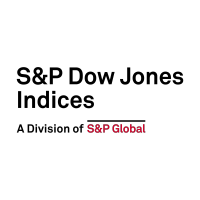Tag Archives: IIS
Frequent Flyers
Planes are interesting places, airborne aluminum tubes stuffed with strangers from all walks of life, including seatmates prodding with the proverbial ice-breaker, “So, what do you do?” Overhearing many such conversations, I’ve found complicated job descriptions elicit blank stares and subsequently lead to higher-level answers such as “Well, I’m in tech,” or “I work in…
- Categories Equities
- Other Tags
- Categories
- Equities
- Other Tags
SPIVA Japan Scorecard 2023: Misfortune for Japanese Stock Pickers
Since the first publication of the S&P Indices Versus Active (SPIVA®) U.S. Scorecard in 2002, S&P Dow Jones Indices has regularly reported on the relative performance of actively managed funds versus benchmark indices across an increasing number of global fund markets and fund categories.1 The SPIVA Japan Scorecard has been tracking the performance of active…
- Categories Equities
- Other Tags
- Categories
- Equities
- Other Tags
Turtle Returns: The Hare and the Tortoise
The tale of a footrace between a determined tortoise and a swift but ultimately complacent hare has been with us for a long time. The earliest known version is two and a half thousand years old; it begins with the hare mocking the tortoise’s slow feet, which leads to a challenge and a contest, and…
- Categories Fixed Income
- Other Tags
Bond Beginnings and Beyond
American political consultant James Carville once commented that he’d like to be resurrected as the bond market because, “you can intimidate everyone.” As of July 2023, the global bond market comprises about USD 135 trillion of securities, of which rated corporate debt represents USD 23 trillion.1 U.S. corporate debt makes up roughly half of the…
- Categories Fixed Income
- Other Tags
Chasing Performance
“…sometimes I’ve believed as many as six impossible things before breakfast.” – The White Queen, Through the Looking Glass Should an asset owner rely on historical performance data to select managers? The efficacy of doing so depends on the answers to three questions: What fraction of the manager universe is truly gifted? How gifted are…
- Categories Equities, S&P 500 & DJIA
- Other Tags
Surveying the Latest SPIVA India Scorecard Results
Were active and fixed income fund managers able to keep up with their benchmarks in the latest SPIVA India Scorecard? Dive into the latest results with S&P DJI’s Bhavna Sadarangani and Benedek Vörös.
- Categories Equities, Fixed Income
- Other Tags
- Categories
- Equities, Fixed Income
- Other Tags
Happy Days for How Long?
With less than a month left to go to close out the year, it’s a good time to reflect on the highs and lows that market participants have experienced. While the year began with a rocky start due to the Silicon Valley Bank collapse, the market continued to power forward, stumbling in Q3 as 10-year…
- Categories Equities, Fixed Income, S&P 500 & DJIA
- Other Tags
Who’s Naughty and Nice
At this time of year, my 9 year old excitedly polishes his boots so that, according to Hungarian tradition, Santa can fill them with sweets and toys during the night between December 5 and 6 (yes, he does arrive a few weeks early in Central Europe). Just like in years past, I am sure he…
- Categories Equities
- Other Tags
- Categories
- Equities
- Other Tags
Finding Fee Savings in Fixed Income
One of the benefits of indexing is its low cost relative to active management. As indexing has grown, investors have benefited substantially by saving on fees and avoiding active underperformance. These benefits are not limited just to equities but have also extended to other asset classes including the fixed income space, where fees can play…
- Categories Fixed Income
- Other Tags
An Elevating Effect on Equal Weight?
The trouncing of smaller caps by mega-cap stocks has been one of the hallmark market themes of this year, with the S&P 500® Top 50 outpacing the S&P SmallCap 600® by 30% YTD.1 As a result of its inherent small-cap bias, the S&P 500 Equal Weight Index (EWI) has suffered accordingly, underperforming the S&P 500…
- Categories Equities
- Other Tags
- Categories
- Equities
- Other Tags















































